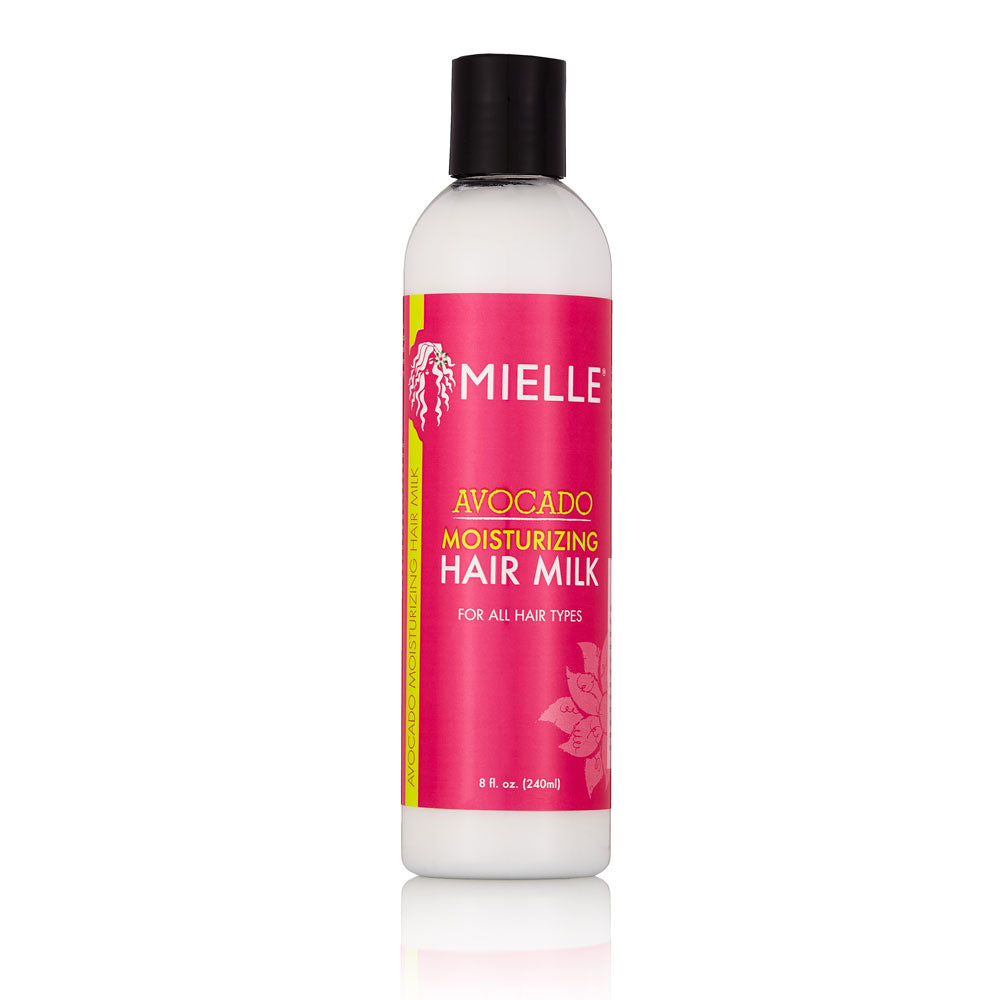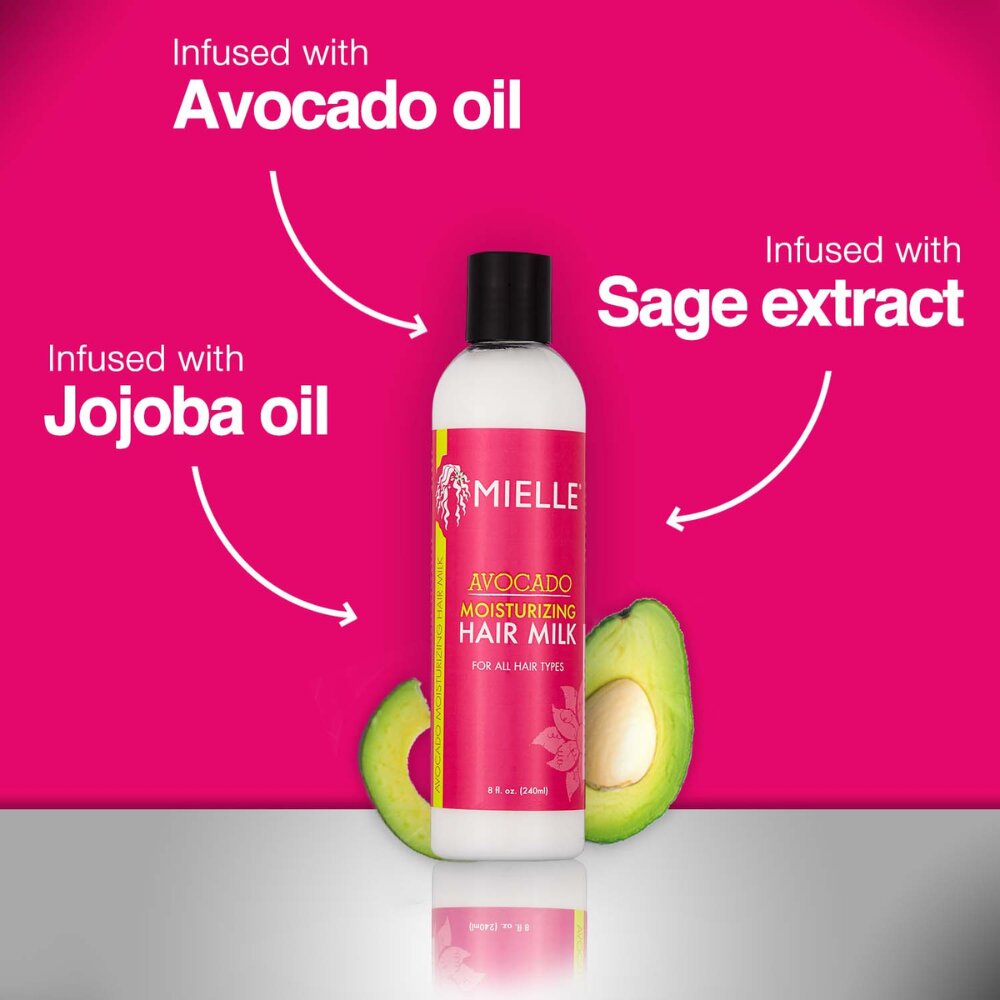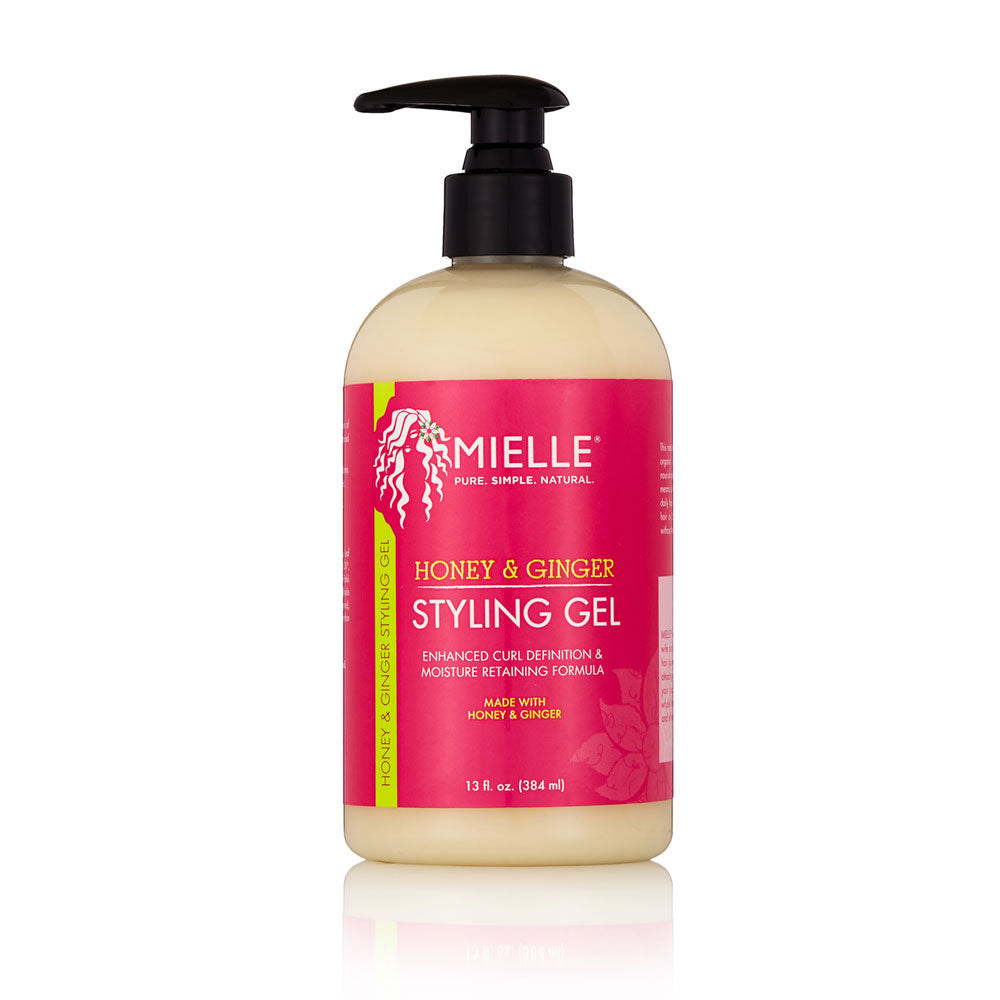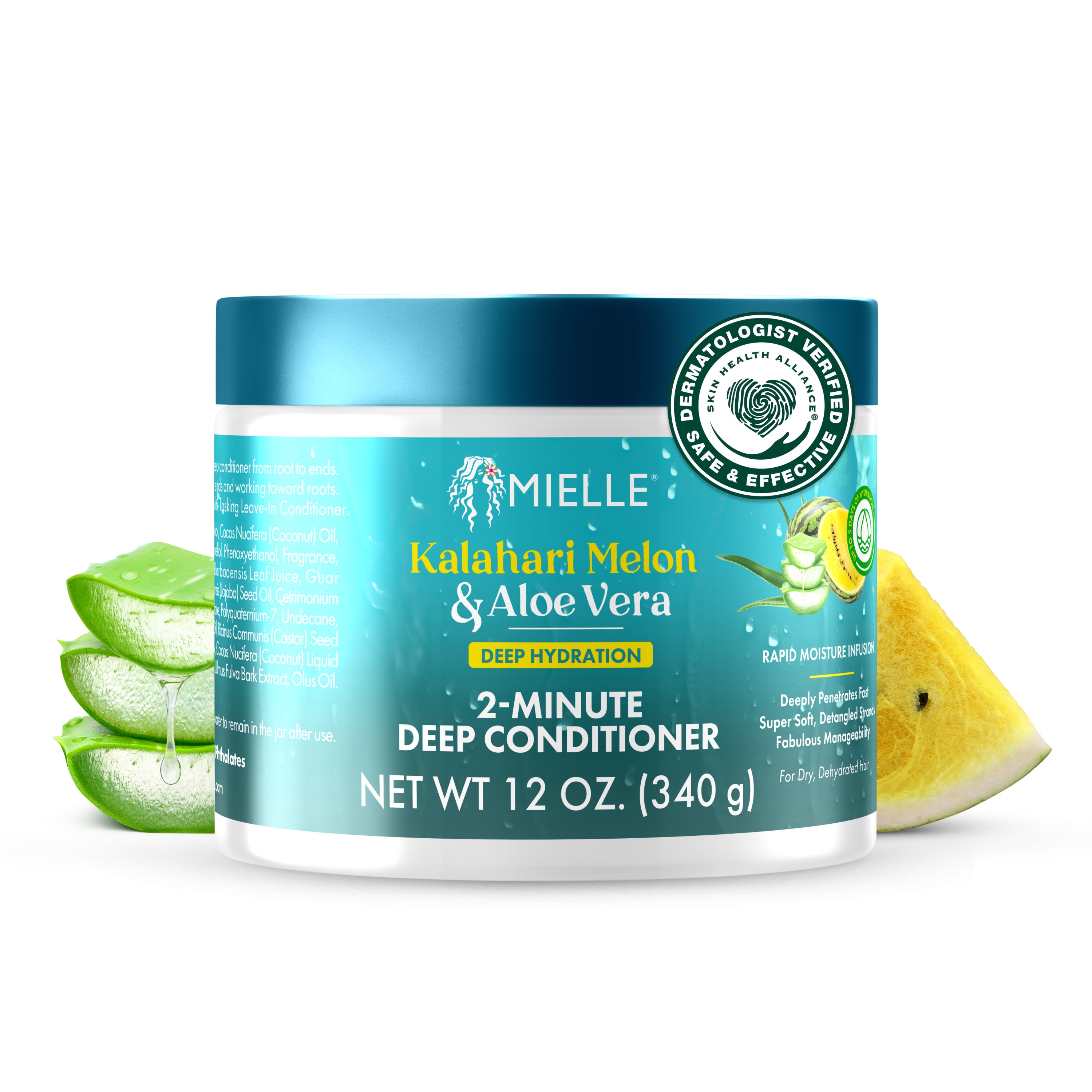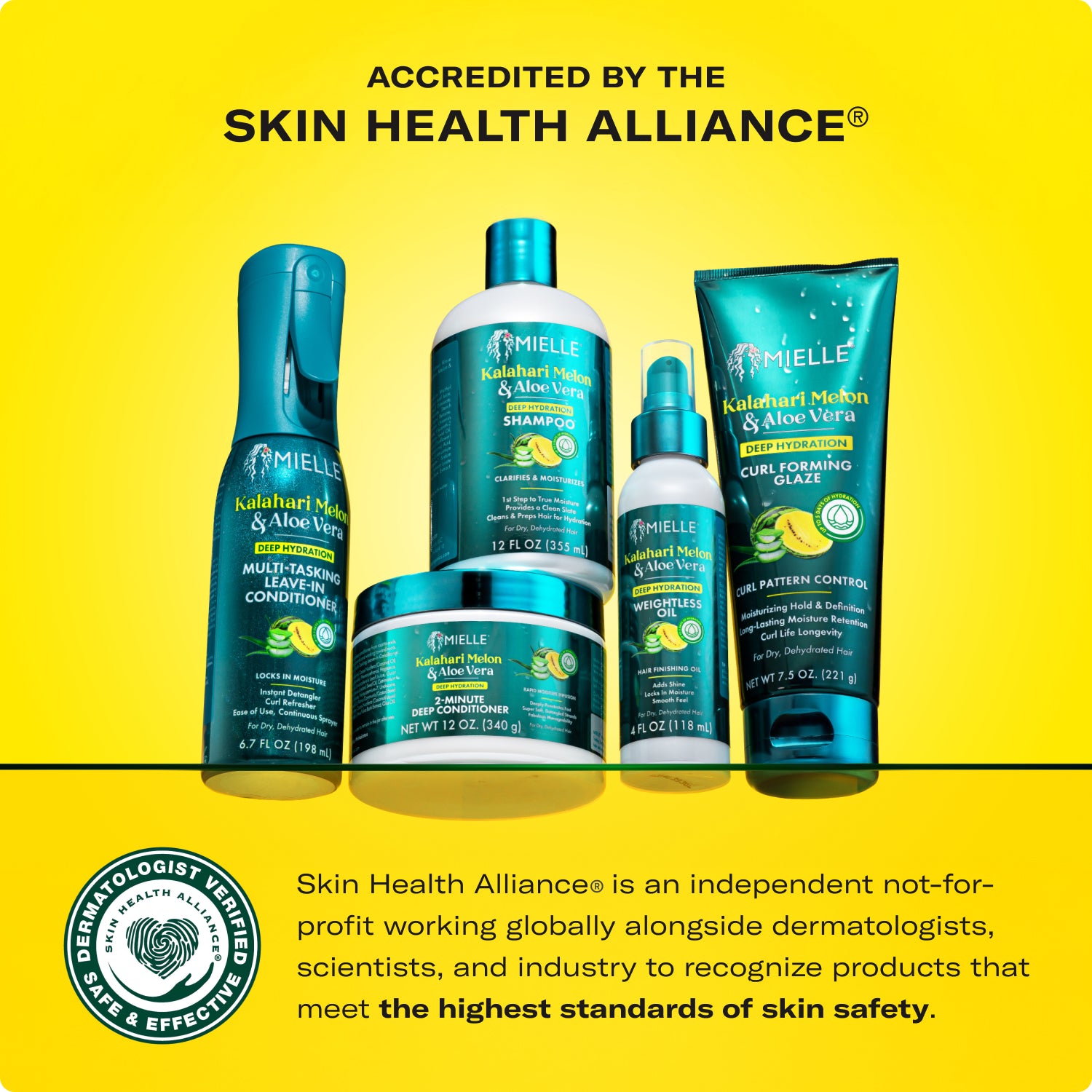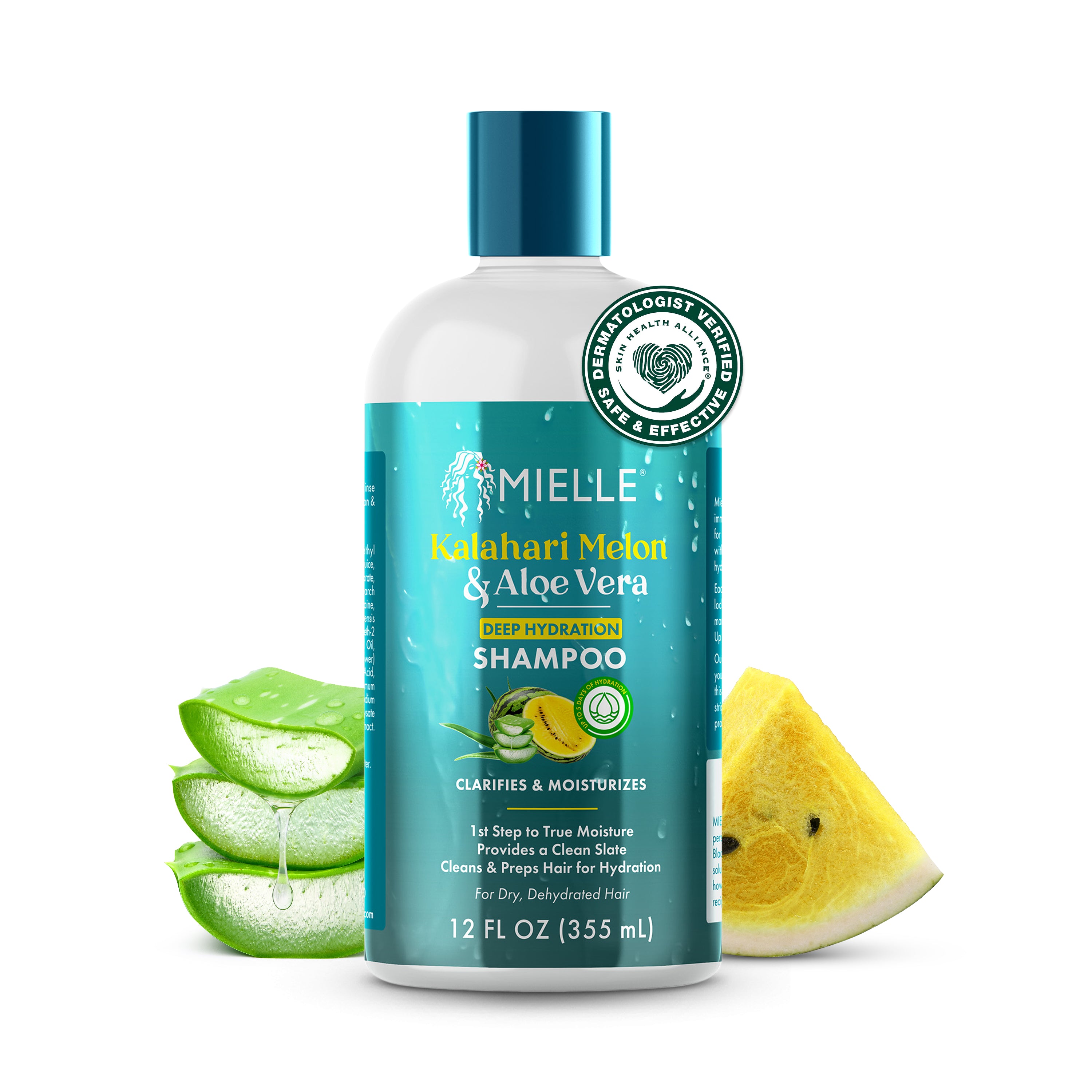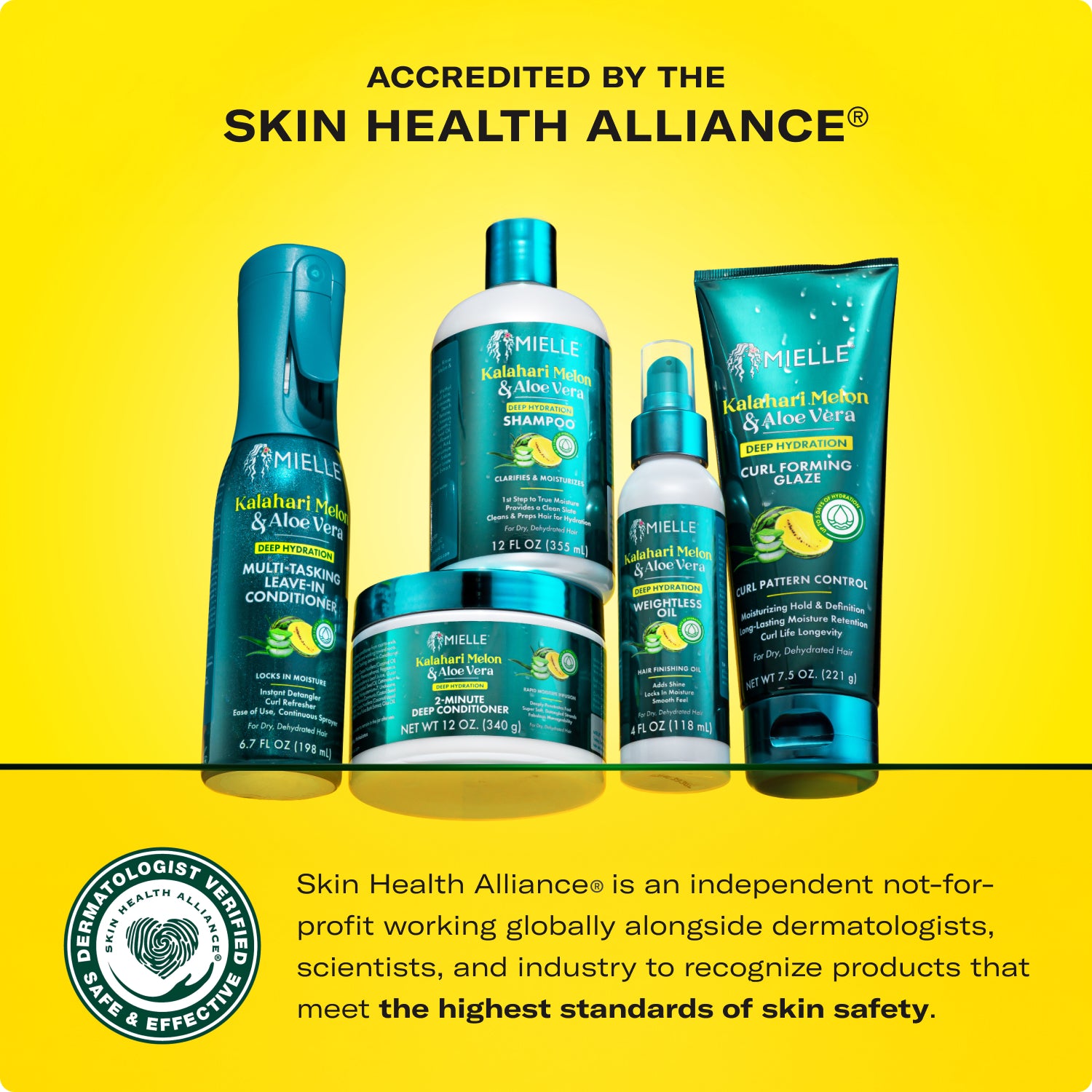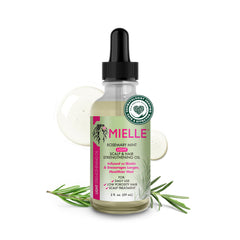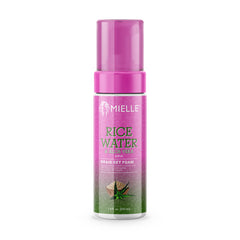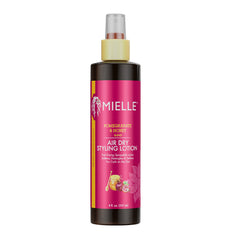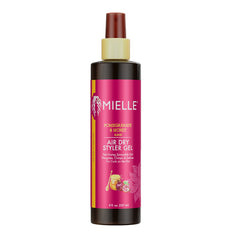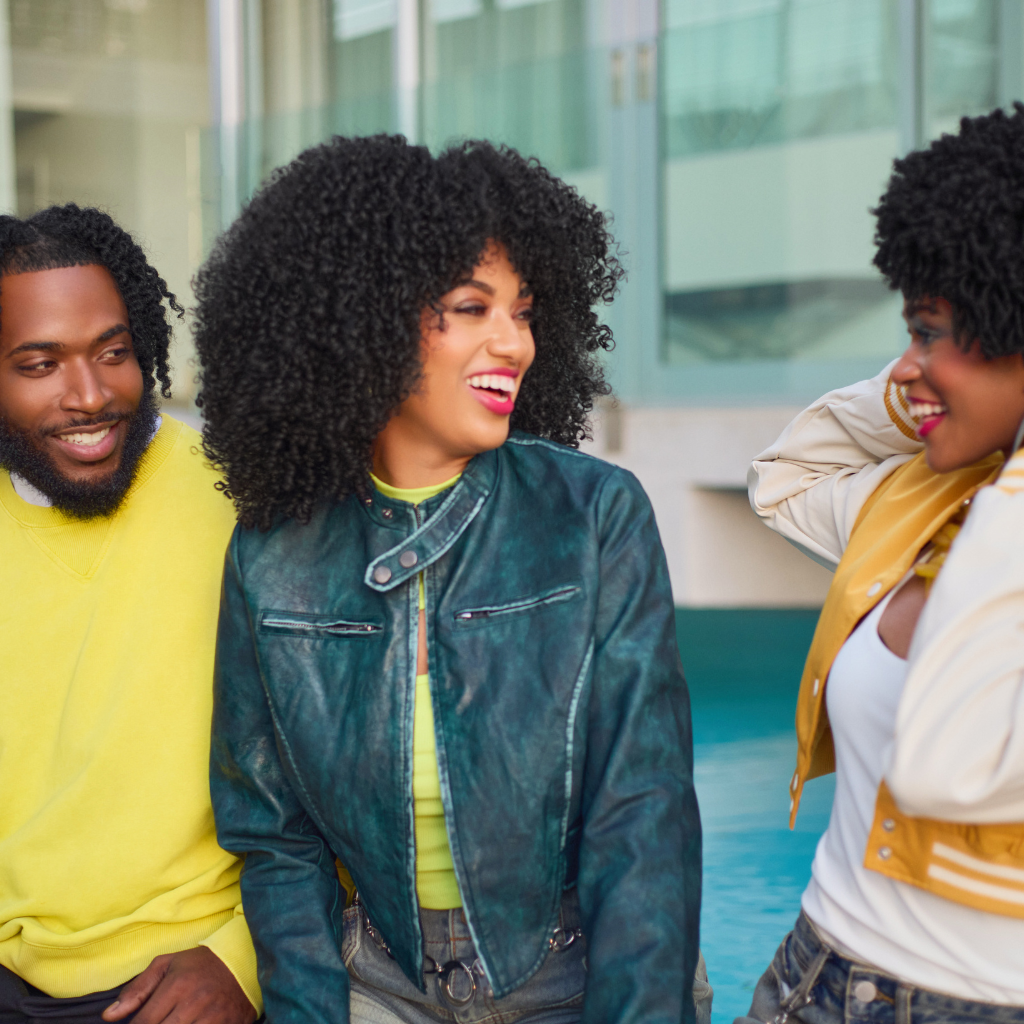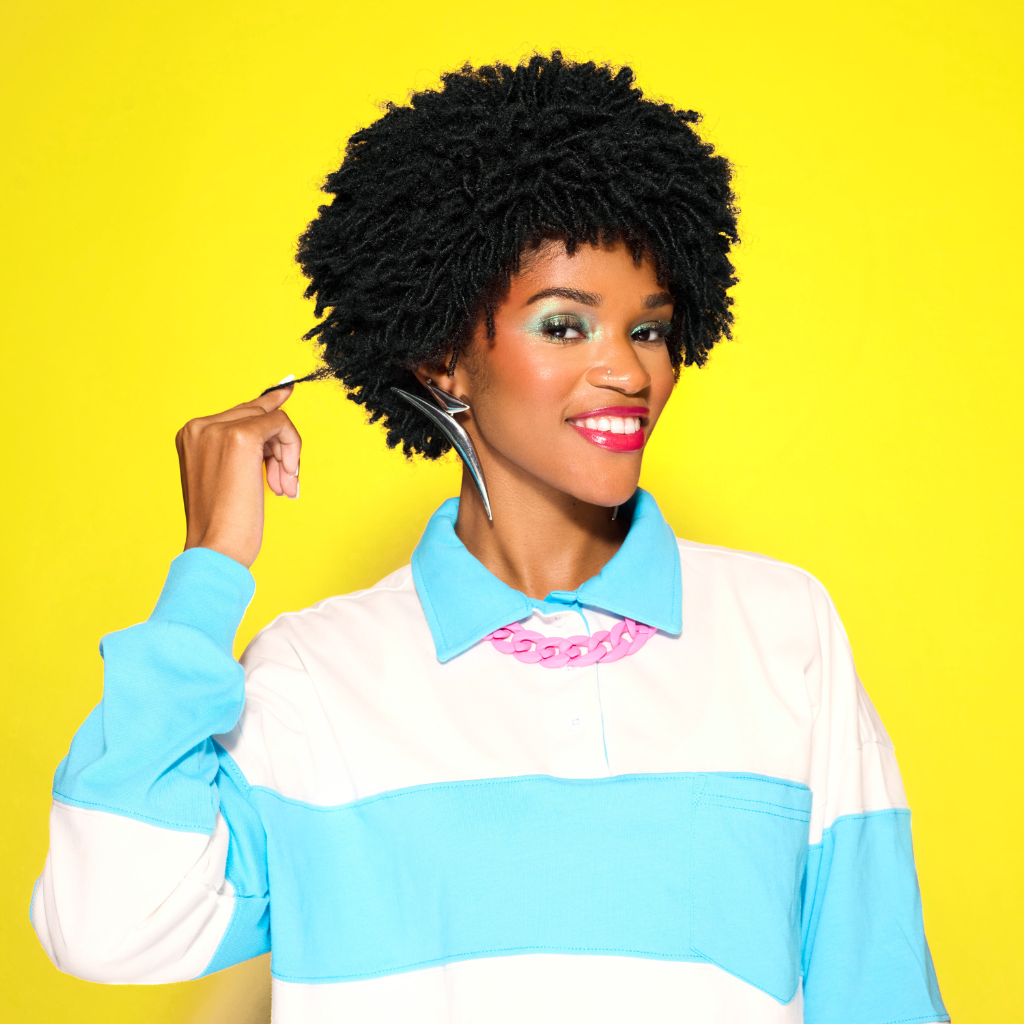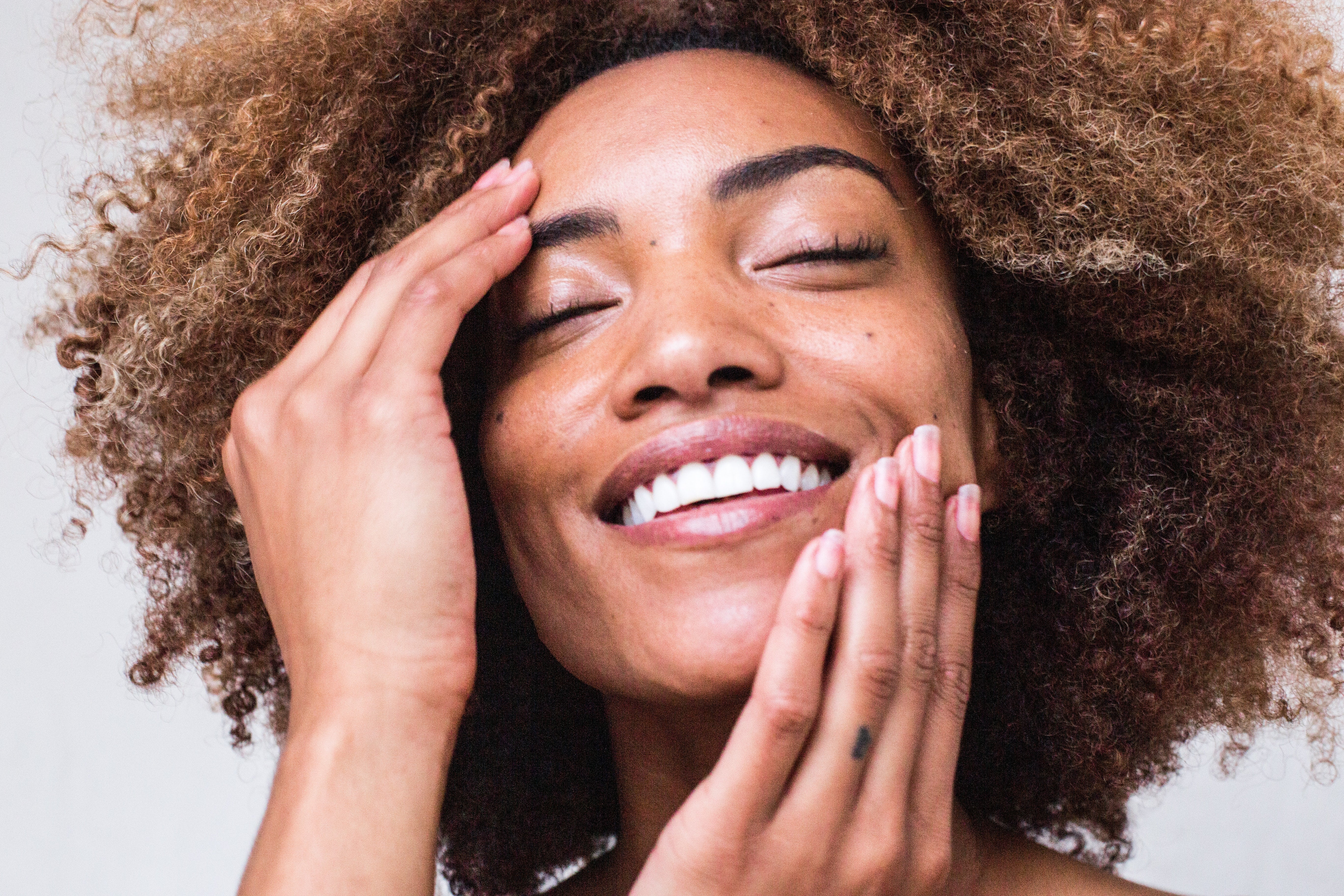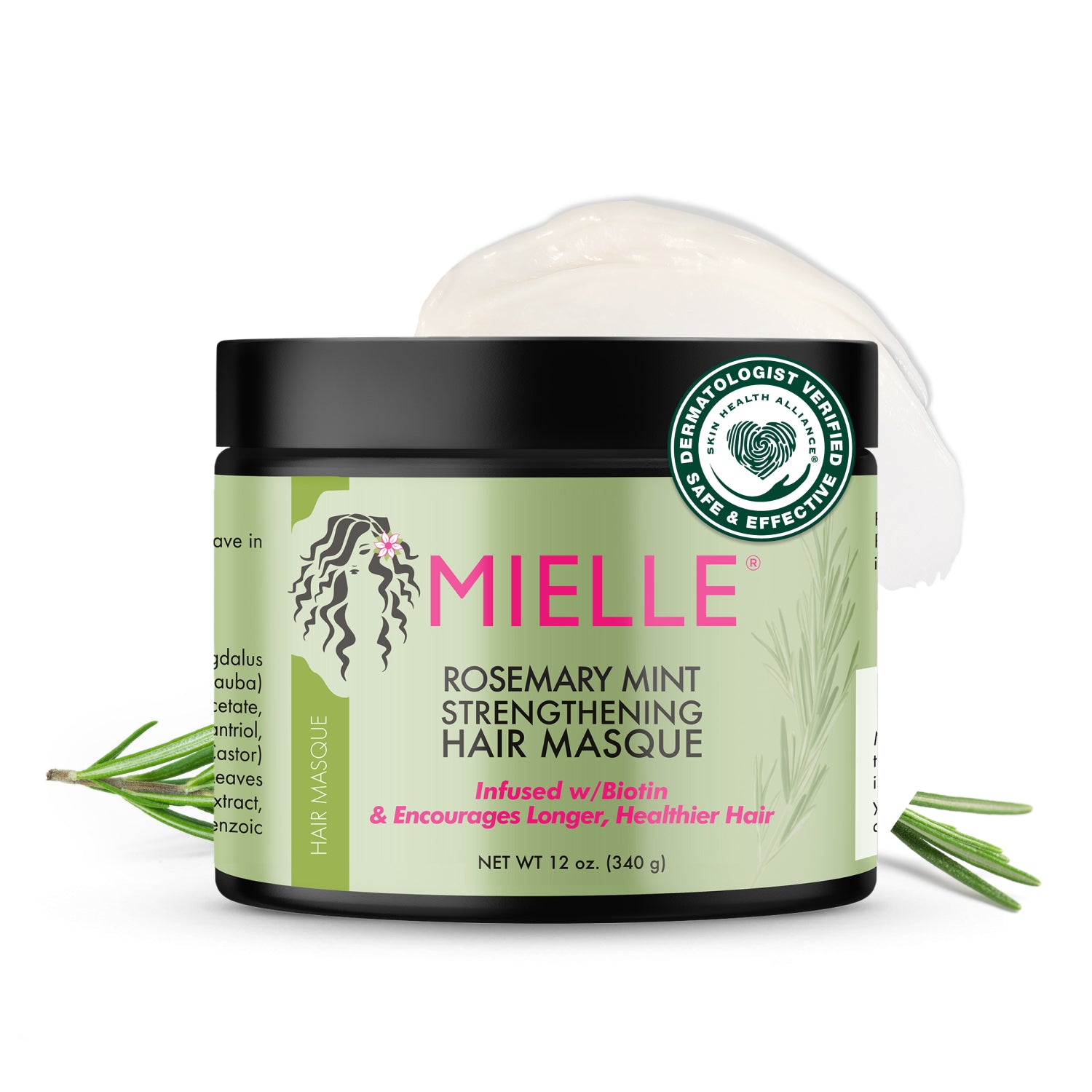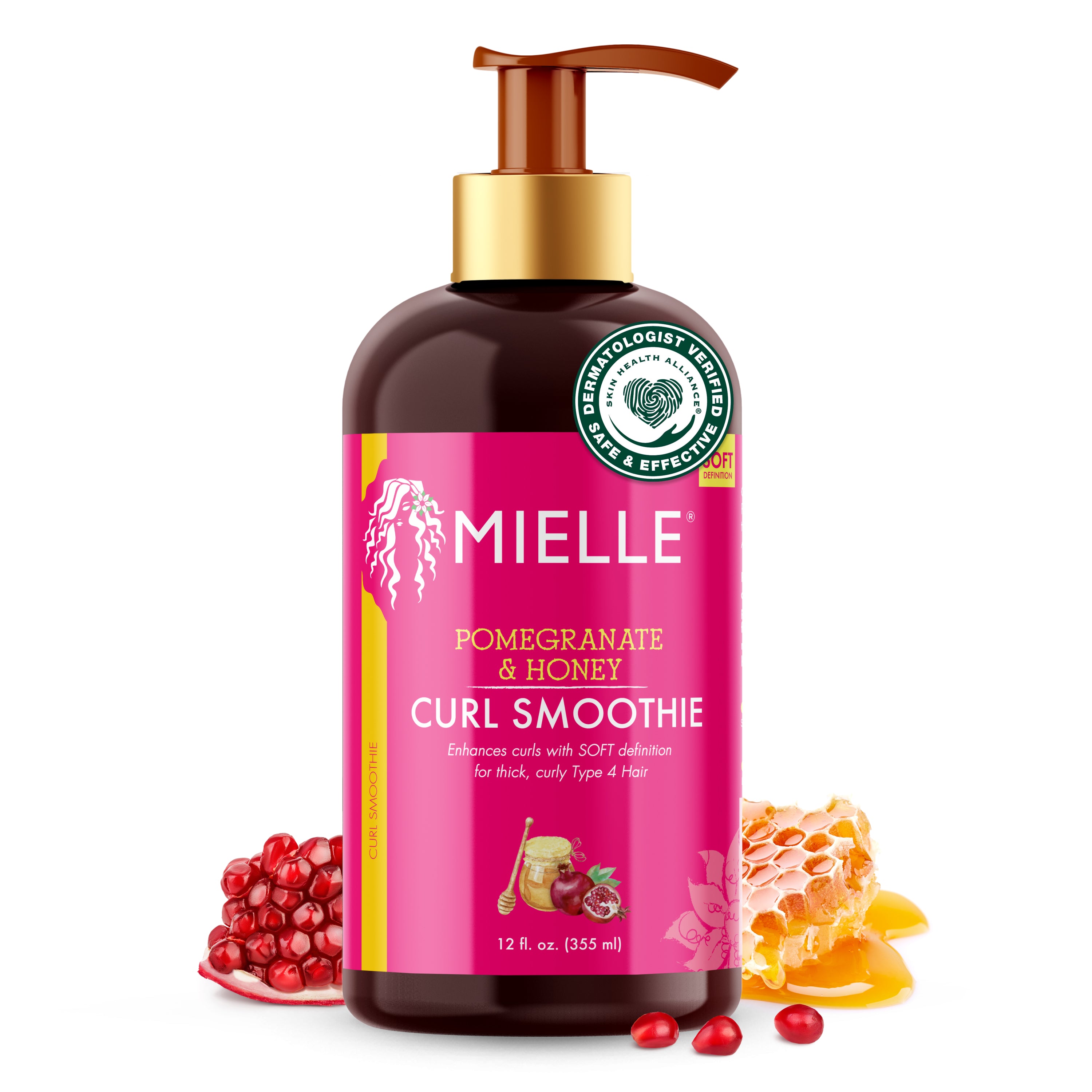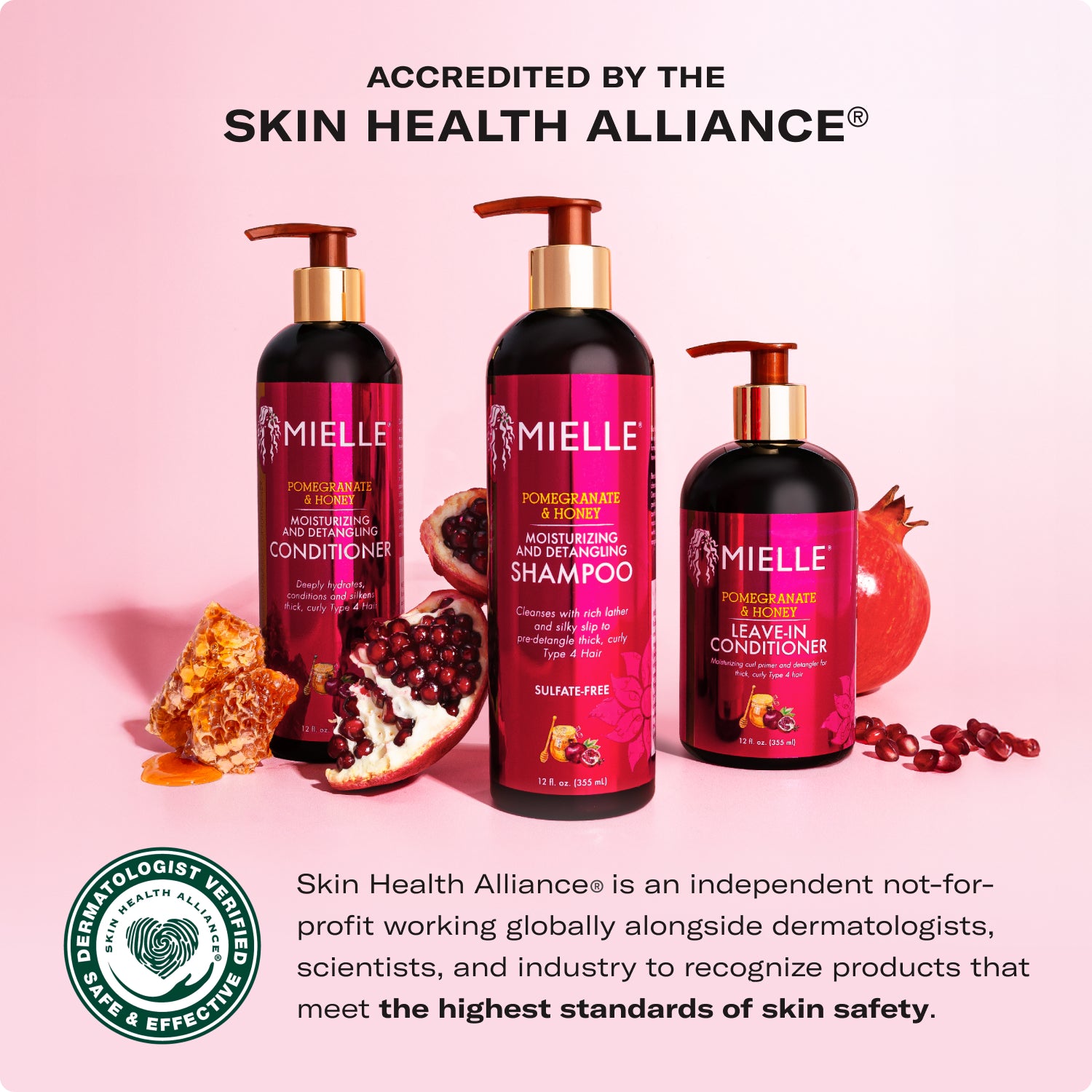What’s your hair texture? If your natural hair is usually under a wig, in a protective style, or blown pin-straight with a hairdryer, you may not be sure anymore.
Depending on your hair texture or curl pattern, you may have been told from an early age that your hair was “difficult” or “untameable.” Or maybe you just didn’t like it!
There’s no better time to start appreciating and nourishing the natural hair texture that’s uniquely yours with some new natural hair products.
In this short guide, we’ll go over different Black hair types and textures. We’ll also provide a short summary of hair care tips for each kind of coiff so that you can start customizing your routine and embracing your natural texture with full confidence.
What Goes Into Hair Texture?
When it comes to texture, there are several contributing factors. These include:
- Hair follicle shape – A hair follicle is a tiny tunnel that your hair strands come out of. If your hair follicles are round, individual strands will come out of your scalp in a straight line. If they are more oval or oblong, your hairs will come out in a wavy or curly shape.
- Density – Some people have more hair follicles per square inch of scalp. Greater follicle density means thicker, more voluminous hair.
- Porosity – Different people’s hair strands absorb moisture differently. Do you have low or high porosity hair? Find out by placing a strand in a glass of water. Low porosity hair absorbs less water, and it will float. High porosity hair will sink to the bottom. Medium porosity hair ends up somewhere in the middle.
These factors determine how curly, voluminous, and hydrated your hair will be without any additional aid from products.
The next step? Figure out how to care for your unique texture. How do you do that? Using a hair typing system that has been created to help you determine what curl type you identify with!
While every head of hair is different, most people’s follicle shape plays the biggest role in determining their texture and hair care routine. This reality led stylist Andre Walker to create a broad hair typing system for classifying hair texture, with four primary hair types.
Since then, the natural hair community has crowdsourced new subcategories and definitions that help us better understand hair texture in all its glorious range.
Next, we’ll take a look at these four hair texture types and the best hair care practices for each.

Straight Hair (Type 1)
Straight hair has little-to-no wave—even after you’ve applied texturizing sprays.
Straight hair has the following qualities:
- The scalp’s sebum, or oil, is easily able to travel down the hair shaft and hydrate each strand. This makes it shiny and smooth.
- Hair may tend towards limpness and oiliness as sebum builds up between washings.
Some people further break down straight hair into categories:
-
1a – Limp, fine, and soft, 1a hair has absolutely no wave. It doesn’t readily curl.
- 1b – While 2a is also very straight, it can hold a curl with a little help from products.
- 1c – This hair type may have a hint of a wave, resembling a very long “S” when grown out.
The biggest struggle with Type 1 hair is combatting oiliness. You’ll likely need to wash your hair every-other-day at minimum. You can also use products like dry shampoo to help refresh your tresses between washes.

Wavy Hair (Type 2)
Wavy hair strands cascade into distinct “S” shapes and may even have a hint of curl. Because hair strands are still relatively straight, wavy hair tends to have plenty of shine and may be less oily than pin-straight hair. In some cases, less porous wavy hair may even be a little bit dry. In this case, it can benefit from hydrating products such as a moisturizing shampoo or deep conditioner.
However, like straight hair, wavy hair usually lacks volume and lays fairly close to the head. (If you have especially dense hair, volume may not be an issue, especially after washing.)
Wavy hair can be further broken down into three categories:
- 2a – Barely-there 3a waves might show up after a trip to the beach.
- 2b – If your hair has distinct, cascading waves, you’re likely a 3B.
- 2c – Curly/wavy 3c has a mixture of waves and curls, and can easily curl with product.
Wavy hair’s texture can be accentuated and manipulated in both directions—heat tools and blow-drying can yield shiny, straight locks, while texturizing and defining products might allow you to sport legit curls (for at least an evening).
The trick with wavy hair? Walking the fine line with products. Too little, and your hair might be dry and frizzy. Too much, and you’ll weigh down the texture your hair does have.
Try out nourishing conditioners and lightweight styling products. If your Type 2 hair is dry or prone to breakage, consider switching to a silk pillowcase.

Curly Hair (Type 3)
Curly hair strands have a distinct “S” shape when lightly tugged. Curls come in all shapes and sizes—from curls the size of fat sidewalk chalk to those that could easily wrap around a Bic pen. Almost everyone with curly hair will notice that they have a range of curl widths, although strands tend to clump together in ringlets of a roughly similar width.
Sebum has a more challenging time navigating down the winding road of a curly hair strand. Why? Think of a slide at a park—when you slide down one that just goes straight down, you’ll get to the bottom faster. But a spiral slide may take you slightly longer to reach the end of the journey. That’s why sebum has a harder time making it all the way to the ends of your curly hair.
That means that curly hair is often prone to dryness and, of course, dreaded frizz. Using heat instruments can further damage the hair, creating additional dryness and even breakage. Don't settle for breakage and frizzy hair. Find out what curly hair type you have and get into the perfect hair care routine for your needs!
To best care for your Type 3 hair, do the “strand test” to understand your hair’s porosity. Then, identify which curly subcategory best fits your coiff:
- 3a – 3a girls have loose, bouncy curls that might flatten to waves after a few days.
- 3b – If your curls are about the size of a sharpie, you likely have 3b hair.
- 3c – More closely coiled, pencil-sized curls belong in category 3c.
All hair in the Type 3 category needs moisture to thrive. Most curly girls find that washing twice a week or so is all they need to keep their hair clean and healthy. It’s always key to use a hydrating, organic shampoo, a deep conditioner, and some hair vitamins to help maintain healthy natural hair.
Leave-in conditioner, spray-in conditioner, and hair masques can all be allies when it comes to keeping your locks luxe and smooth.
While your 3B curls may be fairly defined without product, the right styling cream can help combat frizz and provide enhanced shape.
You can also sleep on a silk pillowcase or place your tresses in a protective style to avoid breakage while you toss and turn at night. Talk about beauty sleep, right?
It seems all too simple to rule off curly hair as being all the same. You may see that you have loose curls, whereas others have tight, ringlet-like curls. Read on to help answer the question, “what type of curls do I have?”

Coily Hair (Type 4)
Coily hair is even more tightly wound than Type 3 curly hair. While some ladies with type 4 hair may still rock defined (albeit very narrow) curls, others have a more Z-shaped strand that doesn’t easily clump into ringlets without some added styling help.
Type 4 hair doesn’t benefit much from the scalp’s sebum, as this oil has difficulty making its way down the hair shaft. This can make coils dry, fragile, and prone to breakage.
If you have Type 4 coils, your textured hair may look similar, whether it’s wet or dry. You’ll also experience lots of shrinkage—your locks look much shorter than they are!
Type 4 can be further subdivided into the following categories:
- 4a – If you have a head full of mini curls, you’re probably sporting type 4a strands.
- 4b – 4b ladies have a crimped texture, with defined curls towards the end of their strands.
- 4c – Now that we’ve covered 4a and 4b hair, what is 4c hair? This hair type is crimped or Z-shaped from end to end, with lots of shrinkage.
Type 4 hair is ultra-versatile—its unique texture enables ultra-voluminous hairdos and looks great in a variety of protective styles. However, because it’s so fragile, you’ll need to give it some extra TLC to maintain strength and length.
Whether your Type 4 hair is high porosity or low porosity, the key is hydration—find it from rice water or mint almond oil.
Putting your hair in twists or bantu knots can help protect it while pulling out the length of each strand so that you experience less shrinkage. Protective styles or wraps are a must at night.
Wash your Type 4 just once a week, and always use a leave-in conditioner. A weekly hair mask can help give you an added boost of hydration to promote healthy hair and moisture.
Note: You may find that 4b and 4b hair have many similarities. However, they are different and require different care. Read on to find out the difference between 4b hair vs 4c!
The Right Products For Your Natural Hair
Different types of natural hair textures need different things. But one thing all hair textures have in common? They look best when the hair and scalp are happy, healthy, and properly moisturized.
If you associate your hair texture with frizz, dryness, or discomfort, it’s not you. It’s what’s in your shower and medicine cabinet. The harsh chemicals in many hair products tend to cause excessive dryness and unhealthy strands in any curly hair type. Everyone’s hair type fairs better with organic ingredients that naturally hydrate and nourish your strands.
Are you looking for the right product to help your Type 3 or Type 4 strands shine? MIELLE Organics draws on years of women’s real-life experience to create ultra-hydrating products that won’t weigh curls down.
Shop by hair type or porosity to find the shampoo, conditioner, and styling products that will give you full confidence in your natural hair texture.
Sources:
- Oprah Mag. How to Determine Your Natural Hair Type.
- Glamour. How to Figure Out Your Curl Type and Why It Actually Helps.
